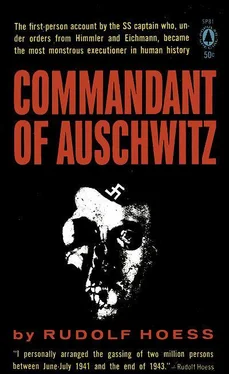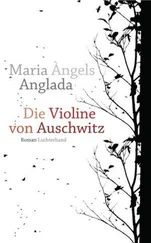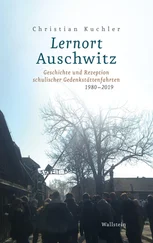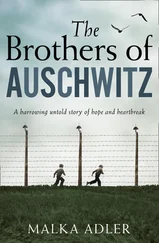5. Hitler had no interest in persuading Niemöller one way or the other. The visitor referred to was Admiral von Lanz. He came on his own initiative, and attempted to persuade Niemoller that he state his intention to avoid touching on “political questions” in future. The admiral did not belong to the Confessional Church.
6. Martin Niemöller’s request for reinstatement in the navy was dated September 7, 1939. In it there is no reference to his possible employment as a U-boat commander. The sentence concerning Hitler’s refusal, and particularly the alleged grounds for this, are pure invention. The truth is that on September 29, 1939, Keitel wrote a letter, addressed to: “The Rev. Senior Lieut, (retd.) Niemöller, Oranienburg, near Berlin, Concentration Camp Sachsenhausen.” This letter, written in his own hand, ran as follows: “In reply to your request of September 7, 1938, I regret that I must inform you that your recall to active service with the armed forces is not envisaged. Heil Hitler! Keitel, Col.-Gen.” To the best of my recollection it was only after this that he renounced the right to wear uniform.
7. That Niemöller hoped to obtain his freedom by conversion to Catholicism is nonsense. It is well known that many devout Catholics were in Dachau. From 1941 on he was with three of these (Neuhäusler and others). He studied the doctrines of the Catholic Church in great detail, and for years on end. But this was purely in connection with matters of the faith, of which Hoess can have no comprehension.
8. The statement that the Provincial Bishop D. Wurm was in Dachau is a strange invention. This Bishop of Württemberg was never either in Dachau or in Posen. He was once under house arrest, in Stuttgart in 1934. In the Dachau cell block Martin Niemöller was the only evangelical cleric. The other pastors were in Barrack 26 of the “Priests’ Block.” The confusion can doubtless be traced to the fact that General Superintendent D. Bursche, head of the Polish Evangelical Church, was in Sachsenhausen, where indeed he died during Martin Niemöller’s time there. The commander of the Sachsenhausen protective custody camp should surely have been aware of this.
The concentration camp prisoners wore triangles of cloth upon their pajama-like camp uniform, the color of the triangle indicating the category to which they belonged, viz.: red—political, green—professional criminal, black—asocial, yellow—Jew, mauve—homosexual, etc.
Reichssicherheitshauptamt: Reich Security Head Office, the supreme police and SS headquarters.
Owing to the size of Auschwitz there were always a first and a second prison camp commander. The first two at Auschwitz were Karl Fritzsch and Hans Aumeier.
Both these places are on the Polish-Slovak border, some sixty miles from Auschwitz.
The local regional representative of the RSHA (Reich Security Head Office) was the Inspector of the Security Police and the Security Service in Breslau. The Commander of the Security Police at Cracow, SS-Brigadeführer Bruno Streckenbach, was also responsible for the dispatch of prisoners to Auschwitz from all the former Polish territories which, during the German occupation, constituted the Government-General.
An area of 40 sq. kilometers, containing three Polish villages, including Brzezinka (Birkenau).
See Appendix 2.
See Appendix 2.
On one occasion Hoess himself ordered the arrest of the parents of a man who had escaped from Auschwitz. Around their necks were hung placards announcing that they would remain in the camp until their son was brought back. Other and crueler reprisals for escape were also ordered, as for example by the protective custody camp commander Karl Fritzsch, who made- indiscriminate arrests among the camp inmates and locked these people into the punishment cells, where they were left to starve.
Approximately 10,000 Russian prisoners of war were moved from Lamsdorf (Stalag VIII B) to Auschwitz early in the October of 1941. They were originally put into nine blocks, stone buildings and barracks, of Auschwitz I, which were separated by wire from the remainder of the base camp. By February 1942 most of the Russian prisoners of war had died of typhus, undernourishment, and various ailments. Approximately 1,500 then remained alive, and these were moved to the new camp being built at Birkenau (Auschwitz II).
On August 18, 1942—that is to say after the mass escape referred to below—only 163 Soviet prisoners of war were registered in Auschwitz. Of these, 96 survived until the end.
Of the 10,000 Russian prisoners of war who came to Auschwitz, a Special Commission from the Gestapo Office, Kattowitz, in November 1941, pronounced some 300 to be commissars or fanatical Communists. These were separated from the others and executed.
The feminine equivalent of the Hitler Youth, a Nazi organization for young girls.
Lucie Adelsberger, in Auschwitz Ein Tatsachenbericht, Berlin, 1956, reckons that in the spring of 1943 there were some 16,000 gypsies in Birkenau camp. She also states that their huts were desperately overcrowded. “Eight hundred, 1,000, or more people per block was normal.” These huts, it will be recalled, were supposed to house 300.
A cancerous growth, usually fatal, which appears mostly on the face, as the result of starvation and physical debility.
Schwarzhuber was 1st Commander of the Protective Camp Birkenau (Auschwitz II) in 1944.
This mass extermination took place during the night of July 31-August 1, between 3,500 and 4,000 gypsies being murdered.
By this Hoess means having sexual relations with a non-Jewish person, a crime in Nazi Germany.
The Nazis referred to the Weimar Republic as the “system”.
A pornographic anti-Semitic weekly publication produced by Julius Streicher.
It is not known on what grounds Hoess makes this assertion, for which no evidence can be found.
The actual word is Judenrein, or “Jew-pure,” a term which the Nazis used when describing areas or cities in which all Jews had been exterminated.
In November 1943 Hoess was transferred from his post of commandant of Auschwitz to the Economic Administration Head Office (WVHA) of the SS in Berlin. The Inspectorate of Concentration Camps had been subordinated to this quasi-ministry since April 1942, of which it formed Department D. From November 10, 1943, Hoess was in charge of the political section (Amt D1) in this department.
From mid-May 1942 the newly built Women’s Camp at Birkenau was designated as the principal detention camp for German and non-German female prisoners. In July 1942 the Reich Security Head Office informed all senior police and security offices that henceforth all arrested females were to be sent to Auschwitz. In September of that year Himmler ordered that all the Jewish women in Ravensbruck Women’s Concentration Camp were to be transferred to Auschwitz, and that Ravensbruck was to be made “Jew-pure.” A number of non-Jewish inmates from Ravensbruck had already been moved to Auschwitz to act as female Capos in the new Women’s Camp there; these were principally criminals and asocials (see below).
Читать дальше












